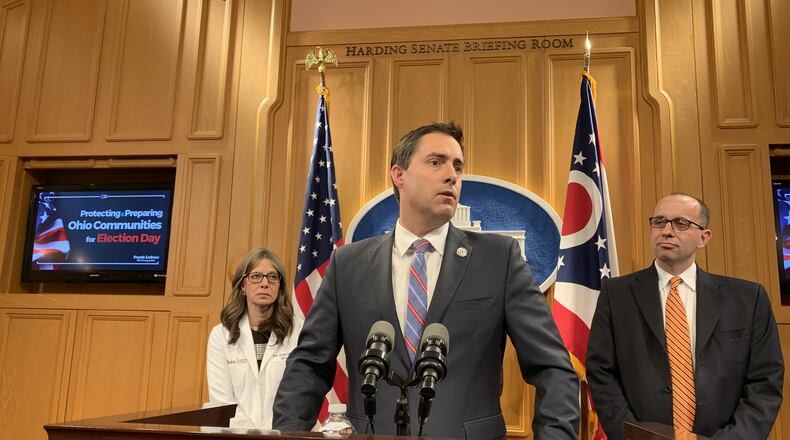MORE: COMPLETE ELECTION RESULTS
PHOTOS: Voters cast ballots for 2020 election
This is well below the 3.3 million ballots cast in the 2016 presidential primary and on par with the 1.97 million ballots cast in the 2012 presidential primary.
Although 10 Democrats qualified for the presidential primary ballot in Ohio, most had dropped out of the race before March 17. Heading in to the mail-in contest, it looked like a two-man match-up between Joe Biden and Bernie Sanders, but Sanders dropped his presidential bid April 8.
RELATED: Republican primary costs incumbent his 43rd Ohio House seat
“Our elections officials overcame great adversity. These patriotic, bipartisan teams — hundreds of men and women throughout the state — in the midst of this pandemic made sure that we had a free and fair election where every Ohioan had the chance to make their voice heard without jeopardizing their health,” said Ohio Secretary of State Frank LaRose shortly after midnight in a video statement posted to Twitter.
RELATED: 1.25M Ohioans seek ballots in 1st mail-in only election
“In our democracy, every voice matters, and every vote will be counted. And when the story of this 2020 presidential primary is told, what Ohioans should know is that we came together to make this happen,” LaRose said.
County boards of elections must start the official canvass by May 13 and certify official vote totals by May 19.
While LaRose painted the primary as a great success, voter rights groups had a different take.
RELATED: Antani and Fogel win state senate primaries; plan COVID-19 focus
After the polls were ordered closed on March 17, lawmakers passed emergency legislation to extend vote-by-mail through April 28. It set up a tight timetable for elections officials to print ballots and envelopes, voters to print and mail ballot requests, county boards of elections to mail out ballots and voters to return them by mail.
“The primary election did not have to go this way,” said League of Women Voters of Ohio’s Executive Director Jen Miller. “But the Ohio legislature decided, despite ample warning, to create adverse conditions for voters and Boards of Elections alike. At a time when Ohioans of all backgrounds are banding together amid a pandemic, sacrificing personally to flatten the curve and move forward together, it is unconscionable that the state legislature failed constituents for no good reason. We can, and must, do better.”
RELATED: Five states vote only by mail. Should Ohio do the same to avoid coronavirus?
“Let’s take the lessons from this primary, and get to work safeguarding future elections,” said Catherine Turcer, executive director of Common Cause Ohio. “Voters want the legislature to enact smart, practical solutions such as streamlining vote-by-mail so that we can have elections in Ohio that are free, fair, and safe for all.”
LaRose has said he’ll deliver a list of contingency options to lawmakers and the governor to consider in case the state needs to conduct a vote-by-mail election in November. LaRose said Ohio would need to have decisions on those options by late August.
RELATED: Local elections officials say vote-by-mail changes everything
LaRose has said he’ll again advocate for a legal change to allow absentee ballot requests be made online — rather than by mail — and a system to automatically send absentee ballot applications to all voters, provide for pre-paid postage, increase county boards of elections staffing and reduce the total number of polling places.
Nearly three in 10 Americans believe the November election may not proceed on time as planned, according to a national poll conducted by Grinnell College from March 27-30.
About the Author

